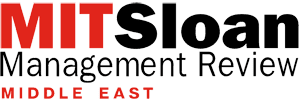This is how companies in the Middle East should be rethinking the employee burnout crisis
High-performing employees are invaluable assets but often face intense pressure from workloads, deadlines, and expectations. How can managers spot early signs of burnout and effectively address them?
News
- UAE’s AI Ambitions Collide With Infrastructure Limits, Kyndryl Report Warns
- India Accelerator Rolls Out $15 Mn Fund for Saudi Market Expansion
- OpenAI Raises the Bar for Enterprise AI with GPT-5.2
- OpenAI Flags ‘High’ Cyber Risk as State AGs Warn Industry Over Harmful Chatbot Outputs
- Riyadh Air, IBM partner to Launch World's First AI-Native Airline
- Adobe Leans Into AI to Defend Its Creative Tech Lead in 2026

[Image source: Krishna Prasad/MITSMR Middle East]
In a fiercely competitive corporate landscape, productivity is paramount—making burnout an increasingly common issue. Though widespread, burnout often goes unaddressed, becoming a hidden challenge within modern management structures.
Dr. Matthew McCourt, clinical psychologist at The Free Spirit Collective, an integrative psychology and well-being center, defines burnout as emotional, physical, and mental exhaustion caused by excessive and prolonged stress. This can manifest in a variety of ways, particularly in high performers. “It is important to know the signs of burnout so we can look out for them in ourselves, but also in our colleagues,” he says, recommending keeping an eye out for the following:
Physical Changes: These can include chronic fatigue, frequent illness, sleep disturbances, headaches, muscle pain, and changes in appetite, demonstrated by either a lack of appetite or stress-related overeating.
Emotional Changes: These can include increased irritability or anger, helplessness, depression or anxiety, and reduced satisfaction and motivation, demonstrated by a marked decline in motivation, enthusiasm, or enjoyment for work or other activities.
Behavioral Changes: These can manifest in reduced performance, featuring a decline in productivity, efficiency, or quality of work. It can also lead to withdrawal from colleagues, procrastination, and increased absenteeism.
What is Causing the Burnout Epidemic?
Identifying early signs of burnout is essential to prevent serious long-term health issues and foster a healthy workplace environment. Elias Madbak, CEO of RMAL Hospitality, emphasizes their proactive approach through internal initiatives, noting the growing visibility of burnout. “Workload, unrealistic expectations, and a high-pressure organizational culture can trigger burnout, especially in the F&B industry.”
Consistently high volumes of work can overwhelm employees, leading to exhaustion and stress, adds Dr. McCourt. “When employees cannot keep up, it can cause frustration and feelings of inadequacy.”
Ambiguity in job roles and responsibilities can also create confusion and stress, as employees may not know what’s expected of them. “High performers may feel pressure to exceed expectations consistently in an unrealistic timeframe, or managers may legitimately have higher expectations for high performers.”
In addition to workload and expectations, the organizational structure and a lack of necessary tools and support can further increase frustration and exhaustion. Dr. McCourt notes that a culture that does not prioritize employee well-being, lacks supportive relationships among colleagues, glorifies and rewards long hours and constant availability, and discourages employees from taking necessary breaks can seriously impact employees’ mental health.
Creating Healthy, Sustainable Working Environments
These aggravating factors highlight management’s crucial role in fostering a healthy work environment, says Omer Tariq, CEO of Helply, a platform providing personalized online therapy and mental health care. He emphasizes the importance of promoting balance and prioritizing well-being rather than treating it as an afterthought.
Flexible Work Arrangements
From a policy level, organizations can do this by implementing flexible work arrangements, such as hybrid schedules or compressed workweeks, along with mental health support programs and wellness initiatives, says Tariq.
Madbak agrees, pointing to research suggesting that flexible work arrangements can reduce burnout by up to 70%. “Our flexible work arrangements, such as adjustable hours and remote working options, help employees balance their personal and professional lives effectively.”
Wellness Programs
Companies can also implement supportive initiatives by engaging HR or managers to develop and provide access to specialized resources. Tariq highlights that childcare support, paid leave, and achievable performance targets can significantly reduce stress. At the same time, Madbak emphasizes the value of wellness initiatives, mindfulness sessions, and mentorship programs to promote growth and sustain peak performance.
On the other hand, Dr. McCourt advocates for a comprehensive approach to mental health, including access to counseling services, stress management workshops, and other resources that help employees thrive.
Recognition and Appreciation
Regularly celebrating employees’ efforts and achievements also supports efforts to mitigate burnout. Supporting the value of such an approach, Dr. McCourt adds that tailoring these initiatives to individual preferences can enhance its impact by understanding how each employee prefers to be recognized, whether it’s public acknowledgment, private praise, or tangible rewards.
Encouraging Teamwork
Creating opportunities for team recognition through celebrations and peer recognition programs can significantly boost morale. Dr. McCourt advises balancing praise with constructive feedback by celebrating efforts, not just outcomes. “This approach enhances employee satisfaction and engagement while fostering a positive, productive organizational culture,” he explains. Madbak echoes these sentiments, sharing the benefits within their organization: “Our culture thrives on support and collaboration rather than competition, helping reduce stress and promote a healthier work environment.”
Effective Leadership and Communication
While tangible initiatives and inclusive policy implementation, such as in the examples provided, are essential, the most critical factor in building healthy organizational structures remains the tone set by leadership. Dr. McCourt emphasizes that leaders must model the behavior they wish to see by promoting transparent communication related to organizational goals, avoiding favoritism, and recognizing diverse contributions: “Fostering a culture of asking questions, seeking clarity on decisions, and valuing all, even differing, viewpoints can also lead to psychological safety within a team.”
Effective leadership practices for promoting work-life balance include setting clear expectations, respecting personal time, and refraining from after-hours emails, explains Tariq. Encouraging breaks, vacations, and disconnecting from work also helps normalize rest, and conversations about workload and well-being foster psychological safety, ensuring employees feel comfortable sharing concerns.
Focusing check-ins on personal well-being, not just performance, allows leaders to address burnout proactively, shares Tariq. “At the end of the day, leaders must cultivate an environment prioritizing sustainable productivity over perpetual hustle.”
Importance of Rest
While organizational leaders play a vital role, employees must also take ownership of their well-being. Dr McCourt advises high performers to set clear boundaries, enforce them without guilt, and request regular check-ins to reassess workloads.
Tariq recommends adopting a “slow down to speed up” mindset by:
- Reconnecting with personal values and engaging in restorative activities like exercise or mindfulness.
- Seeking support from peers, mentors, or professional networks.
- Using coping strategies, such as breaking tasks into manageable steps.
- Delegating responsibilities to reduce overwhelm.
- Maintaining regular social connections for emotional relief.
- Exploring therapy or coaching for deeper recovery strategies.
“Shifting the focus from perfectionism to sustainable achievement is crucial,” Tariq adds. “High performers thrive by balancing ambition with self-compassion, recognizing that rest fuels long-term success.”





